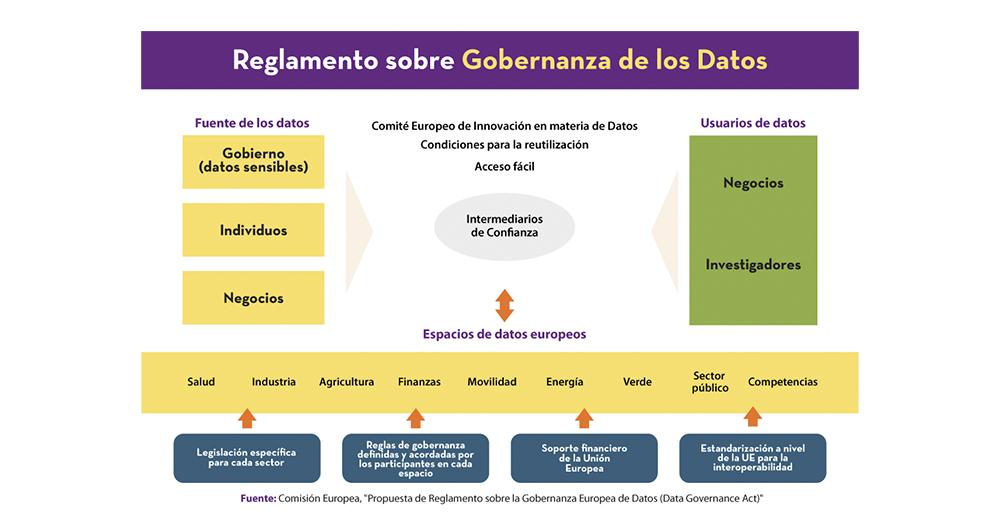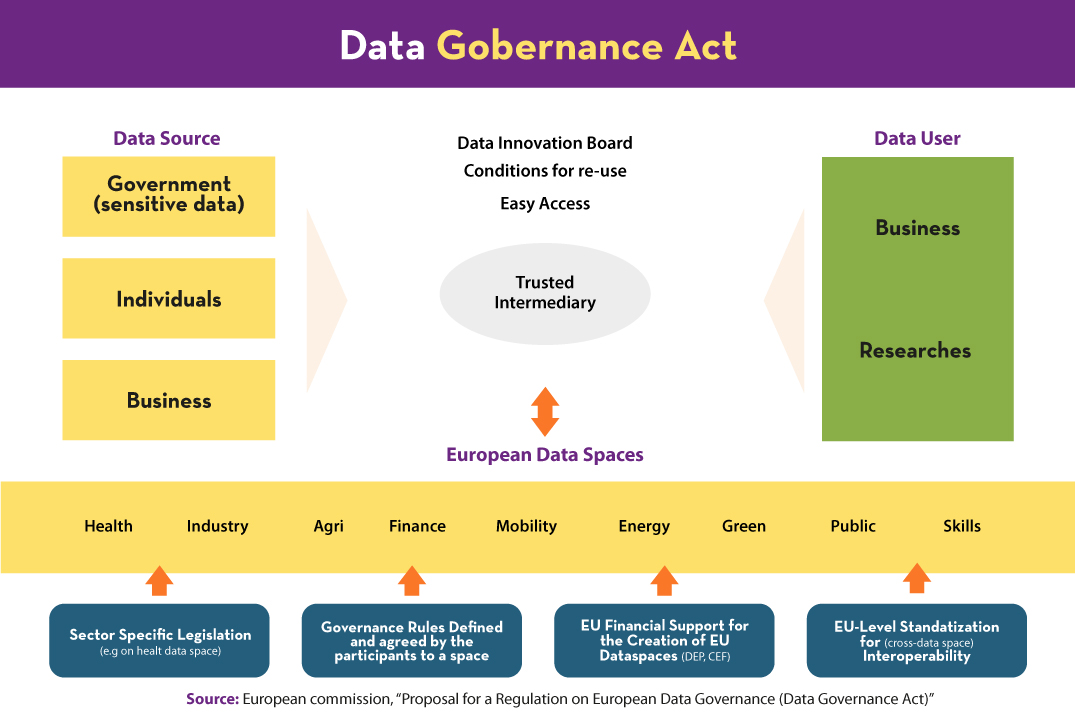
The year 2021 is undoubtedly a crucial period for the definitive progress in a regulatory and institutional framework that will enable the promotion of data strategies at both national and European level. As regards the latter, as has been advanced through various media, the main initiative refers to the foreseeable approval of a new data governance framework already announced with the draft Regulation made public in November 2020. As can be seen in this outline, this regulation is set to become one of the cornerstones of European policy on open data.

As a basis for the proposal for a Regulation on data governance, an impact assessment has been carried out beforehand, which has considered various analytical criteria, in addition to assessing the cost-benefit ratio of each of the measures envisaged. Specifically, the impact assessment identified several regulatory options of varying intensity in relation to the four main challenges identified:
- Identifying mechanisms to improve the re-use of public sector data
- Promoting trust in intermediaries
- Facilitating the transfer of data for altruistic purposes
- Fostering horizontal aspects of governance.
The evaluation found that there are barriers related to difficulties in accessing data, mostly related to technical aspects and data quality, but other barriers are also highlighted, such as those related to denial of access or the setting of unfair or prohibitive conditions, both financial and otherwise.
Throughout the process of preparing the impact assessment, evidence has been gathered through different and complementary methodologies, such as case studies and workshops on the possible existence of third-party rights hindering re-use and on governance structures; market studies on the role of intermediaries; and legal analysis, in particular on altruism in the release of data.
The different regulatory options considered ranged from no general measures at all (although they could be considered in relation to specific sectoral areas or, where appropriate, by Member States), to high/low intensity regulatory measures, without ruling out simple coordination based on guidelines and recommendations.
What were the different regulatory options envisaged in each of the above areas and why have some been prioritised over others?
Mechanisms to improve the re-use of public sector data
As a low-intensity measure - finally chosen - it was envisaged that Member States should establish a one-stop shop that would allow re-users to contact public sector bodies and even offer them advice, in particular to facilitate the re-use of publicly owned data subject to third party rights under certain conditions. The more demanding option, which was discarded in the final proposal, was instead to oblige them to set up a single body with decision-making powers, although this would entail significant legal and institutional challenges and more rigidity.
Promoting trust in intermediaries
In this respect, the approach is to seek to strengthen the role of intermediaries in fostering reliable data exchange systems both in business-to-business (B2B) and consumer-to-business (C2B) scenarios. In particular, while the less intensive alternative focused on an EU-wide voluntary labelling/certification scheme for such intermediaries, the more demanding option would have been to make such schemes mandatory. The major difficulties relating to the lack of an appropriate industry forum for the development of such a model and the difficulties in setting neutrality criteria, as well as the risk of fragmentation, led the draft Regulation to incorporate the first of the alternatives.
Facilitating the transfer of data for altruistic purposes
In relation to this objective, the aim was to ensure the availability of more data for the common good by increasing trust in systems inspired by altruism in the provision of data. Thus, a choice was made between requiring States to establish voluntary certification schemes for the implementation of data altruism mechanisms and/or for the entities that offer them or, on the contrary, opting for a model based on the need to have an authorisation to carry out such activities. This authorisation, granted by a public authority in advance and valid in the rest of the Member States, would aim at verifying whether the requirements laid down by law are actually met. The latter alternative was finally chosen in order to strengthen confidence in such entities and arrangements.
Fostering horizontal aspects of governance
The draft Regulation proposes the creation of a formal group of experts - the so-called European Data Innovation Board - in charge of promoting the exchange of national practices and policies based on the information provided by the States themselves, as well as exercising advisory functions, facilitating standardisation and the improvement of interoperability, providing coherence to the proposed governance model as explained in the following image:

However, the creation of a body with its own legal personality was envisaged which, in addition to the above-mentioned functions, would assume the task of supervising the process of granting labels and certifications, as well as the authorisations granted by the Member States. This last alternative was rejected, among other reasons, due to the results of the cost/benefit analysis carried out from the point of view of economic efficiency.
Finally, the document itself envisages a mid-term review mechanism through which to check whether, four years after the entry into force of the Regulation's provisions -three in the case of the objective of strengthening confidence in data sharing- the measures adopted really meet the expected results in terms of a series of specific indicators for each of the objectives and solutions finally proposed. In short, this is an approach that takes on a singular relevance if we consider the dynamism that characterises the data economy, since the regulation proposed with the draft Regulation is destined to be one of the main tools in meeting the objectives formulated in the European Data Strategy.
Content prepared by Julián Valero, professor at the University of Murcia and Coordinator of the Research Group "Innovation, Law and Technology" (iDerTec).
Contents and points of view expressed in this publication are the exclusive responsibility of its author.